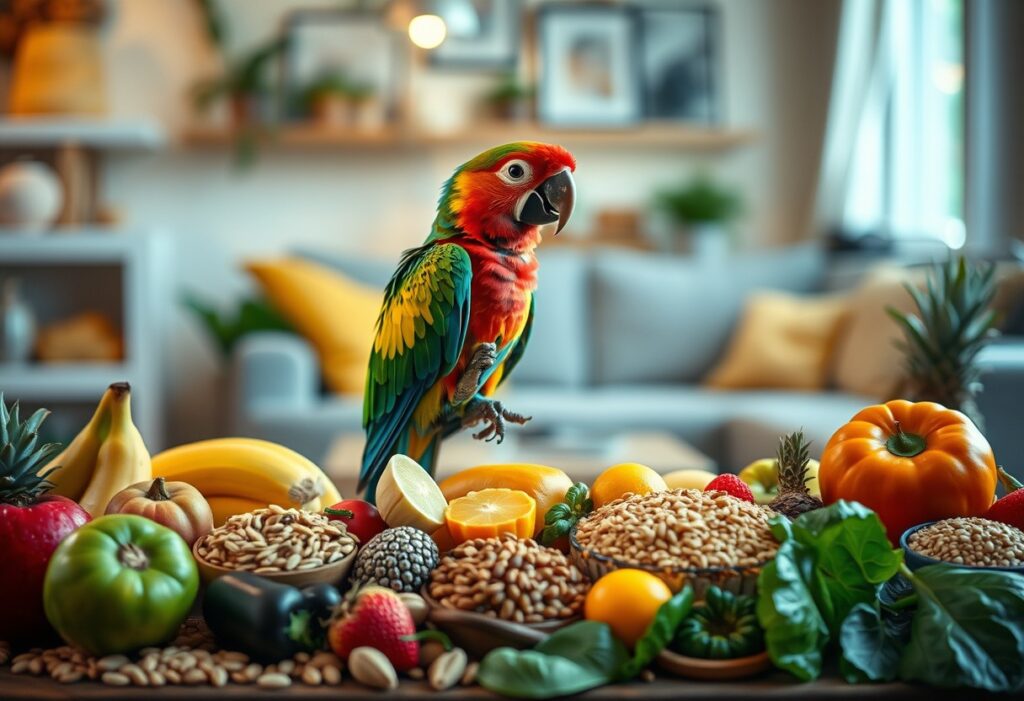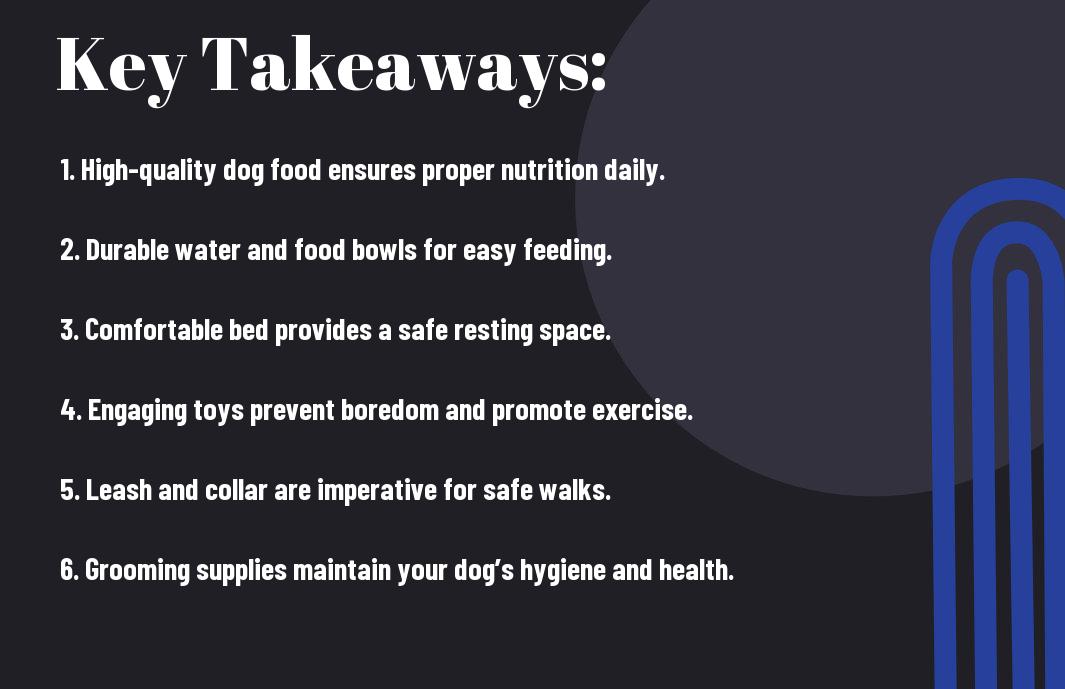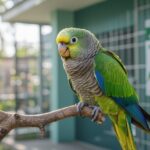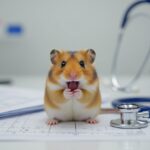There’s a growing concern among pet owners about the health of their feathered friends, particularly regarding obesity. As a responsible bird owner, you want to ensure your pet maintains a healthy weight to prevent serious health issues. In this guide, you will discover effective strategies to manage your bird’s diet, encourage physical activity, and recognize the signs of obesity. By following these tips, you can enhance your bird’s quality of life and help them thrive.

Understanding Obesity in Pet Birds
Defining Obesity in Birds
The notion of obesity in pet birds may be less familiar than it is in other pets, but it is an escalating concern that demands your attention. Obesity is typically defined as an excess of body fat that can negatively affect your bird’s health. This condition can lead to various complications, including an increased risk of heart disease, diabetes, and even decreased lifespan. It is crucial to monitor your bird’s body condition regularly, as birds can be masters at hiding their health issues until they become severe.
Now, when you observe your bird, look for signs of obesity such as an overly rounded body shape, difficulty in flying, or a prominent breastbone that is less defined than normal. It is recommended to consult with a veterinarian for specialized assessments to determine if your feathered friend falls into the category of being overweight or obese. Awareness is the first step towards ensuring the long-term health and happiness of your bird.
Recognizing Causes of Obesity
Understanding the causes of obesity in your pet bird is necessary for effective prevention. Common factors contributing to this condition include poor diet, lack of exercise, and genetic predisposition. Many birds have a tendency to overeat, particularly when you provide high-calorie treats that may not be a part of their natural diet. As a responsible bird owner, you must strive to create a balanced diet that incorporates a variety of fruits, vegetables, and high-quality pellets, avoiding excessive seeds and fatty foods.
To combat obesity, it is vital to ensure that your bird has ample opportunities for physical activity. This could mean encouraging natural behaviors such as climbing and flying. If your bird is social, consider set playtimes each day where they can interact with you or other birds. Routine vet check-ups can also help you understand your bird’s weight and nutritional needs better. By acknowledging these factors, you are taking the first step toward preventing obesity and promoting a healthy lifestyle for your pet bird.
Factors Contributing to Obesity
Any serious pet owner should be aware of the various factors contributing to obesity in pet birds. Understanding these factors is crucial for developing effective strategies to keep your feathered friends healthy and vibrant. Below are some of the most common contributors to avian obesity:
- Diet composition
- Lack of exercise
- Environmental factors
Assume that you are well-informed about these issues; your awareness can greatly enhance your pet bird’s quality of life.
Diet Composition
Little attention is often given to the diet composition of pet birds, yet it plays a significant role in their overall health. Birds primarily need a balanced diet rich in seeds, pellets, fruits, and vegetables; however, many owners tend to favor seeds, which are high in fats and low in vital nutrients. Providing a well-rounded diet filled with a variety of food items is crucial to prevent excessive weight gain.
Moreover, overindulgence and treats can add up quickly, contributing to obesity. It is vital that you monitor the types and amounts of food your bird consumes. Aim for a diet that emphasizes a variety of foods, including leafy greens and whole grains, reducing the reliance on high-fat seeds. Balancing your bird’s diet will support their health and longevity while helping them maintain a healthy weight.
Lack of Exercise
The lack of exercise is another major contributor to pet bird obesity. Birds are naturally active creatures that require physical activity to maintain optimal health. When confined to small cages, they often miss out on opportunities for exercise, leading to weight gain and myriad related health issues.
Exercise is vital for your bird’s overall well-being. Regular out-of-cage time for flying and engaging in playtime will help burn calories and stimulate their minds. Additionally, providing toys designed for physical activity can encourage movement during solo time in the cage.
Exercise should be a fundamental part of your bird’s daily routine. Creating an environment that encourages movement and play will not only help in preventing obesity but also improve your bird’s mood and behavior.
Environmental Factors
Little consideration is often given to environmental factors that can lead to obesity in pet birds. The setting in which your bird lives significantly affects its activity level. If their environment lacks stimulation or opportunities for exercise, they may become sedentary, contributing to weight gain. Furthermore, excessive exposure to stressors can lead your bird to comfort-eat, further exacerbating the issue.
To promote a healthier lifestyle for your bird, consider the following environmental factors:
- Space to move
- Toys and stimulation
- Social interaction
Thou must remember that the living environment significantly influences your bird’s activity levels.
Environmental enrichment is vital for your bird’s happiness and health. Providing ample space for movement and interaction with various toys not only keeps them physically active but also mentally stimulated.
- Adequate lighting
- Safe exploration areas
- Varied routines
This dynamic setup is vital for ensuring your bird remains active and engaged while alleviating the potential for obesity. Thou must commit to fostering a nurturing environment to see the best outcomes for your feathered companions.

How to Prevent Obesity
Many pet bird owners are unaware of the significant role that diet and exercise play in maintaining their birds’ overall health. Preventing obesity in your feathered friend requires a multifaceted approach that emphasizes a balanced diet and regular physical activities. It is crucial to foster good habits from an early age, as this can set the stage for a healthy and active lifestyle throughout your bird’s life.
Creating a Balanced Diet
Now, to create a balanced diet for your bird, you should focus on offering a variety of foods that are appropriate for your pet’s species. High-quality pelleted diets should form the foundation of their meals, as these are specifically formulated to meet the nutritional needs of various bird species. You should also supplement their diet with fresh fruits and vegetables, ensuring you avoid any toxic options. Consider incorporating small amounts of seeds and nuts as treats, but be cautious about their high-fat content. Offering a well-rounded diet will help prevent excessive weight gain.
In addition to appropriate food choices, it’s important to establish a feeding schedule. Consistency is key in preventing your pet from overeating. Rather than leaving food out all day, you should feed your bird at specific times, and remove any uneaten food after about 30 minutes. This will teach your pet to eat only when food is provided and help avoid behavioral issues related to constant access to food.
Encouraging Physical Activity
Diet plays a vital role in your bird’s health, but physical activity is equally important in preventing obesity. Make it a priority to provide your bird with opportunities for active play. You can do this by introducing a variety of toys that encourage movement, such as swings, ladders, and climbing structures. Moreover, be sure to allow your bird time out of their cage during the day, as this will promote exploration and exercise.
Activity levels can greatly vary between different species of birds. To better suit your specific bird’s needs, observe their natural tendencies to fly and roam. If you have a larger bird, like a parrot, consider setting up a safe flying area where they can stretch their wings daily. For smaller birds, such as budgies or canaries, smaller play areas or bird-safe rooms where they can climb and forage can be highly effective in promoting activity.
Monitoring Feeding Habits
Balanced feeding habits are paramount to maintaining your bird’s weight. Carefully monitor the amount of food you provide and keep track of how much your bird consumes. Consider using a scale to weigh your pet regularly; this can help you detect any sudden weight changes. Keep in mind that a gradual increase in weight can be much less alarming than a sudden spike. If you notice your bird gaining weight, consult your veterinarian to assess their diet and make necessary adjustments.
This attention to monitoring feeding habits extends to understanding your bird’s individual needs. Factors such as age, metabolism, and activity levels can fluctuate, necessitating adjustments in feeding protocols. You should also keep an eye out for any signs of overeating, such as lethargy or refusal to engage in physical activity. These could be subtle hints that your bird may be headed towards obesity.
Providing Mental Stimulation
If you want to keep your pet bird mentally sharp and active, mental stimulation is important. Toys that encourage problem-solving, such as treat-dispensing puzzles or foraging toys, can help keep your bird entertained and engaged, effectively countering boredom-related overeating. Additionally, by providing opportunities for social interaction, you foster a more enriching environment that promotes physical play.
To further enhance your bird’s mental stimulation, consider rotating toys regularly to provide new challenges and keeps their environment dynamic. You might also introduce foraging opportunities by hiding treats amongst their toys or modifying their housing with enriching elements. This approach not only engages your bird’s intellect but also encourages them to stay active, further preventing the risks associated with obesity.

Tips for Maintaining a Healthy Weight
All pet owners want the best for their feathered friends, and maintaining a healthy weight is a crucial aspect of their overall well-being. Here are some practical tips that can help you prevent obesity in your pet birds:
- Provide a well-balanced diet that includes pellets, fresh fruits, and vegetables.
- Limit high-fat seeds and sugary treats.
- Encourage regular exercise through interactive toys and flying time.
- Monitor your bird’s weight regularly and adjust their diet as needed.
- Consult your veterinarian for specific dietary recommendations.
Regular Health Check-ups
For maintaining the ideal weight for your bird, regular health check-ups with your veterinarian are important. These appointments can help detect any potential health issues that may contribute to weight gain or loss. A thorough examination can provide you with valuable insights into your bird’s metabolism, nutritional needs, and overall health status.
During these check-ups, your veterinarian can also advise you on the optimal weight range for your specific bird species. They will help you create a tailored plan that suits your bird’s unique needs to facilitate weight management effectively. Regular evaluations can significantly assist in keeping your pet bird fit and healthy.
Understanding Bird Body Condition
Bird body condition is an important aspect of your pet’s health that you must be aware of. Factors such as the size, shape, and weight of your bird play a significant role in determining whether they are at a healthy weight. Paying attention to body condition will enable you to identify if your feathered friend is underweight, overweight, or just right for their species and age.
Birds come in various sizes and shapes, making it vital to understand their individual body conditions. Look for fat pads on the sides of their breastbone, as these can indicate excessive fat storage. Regularly weigh your bird and compare it to the standard charts for their species, and never hesitate to consult your veterinarian if you notice unusual weight fluctuations.
Plus, assessing the body condition of your bird will help you make informed decisions regarding their diet and exercise routines. This proactive approach allows you to create the best environment for your pet’s health and longevity, ensuring they are not only happy but also thriving.
Adjusting Diet with Seasons
Even the changing seasons can impact your pet bird’s dietary needs. During different times of the year, you may notice your bird’s activity level fluctuating—a phenomenon that can affect their metabolism and, consequently, their weight. Therefore, adjusting their diet based on seasonal factors is key to managing weight effectively.
In warmer months, your bird’s caloric needs might be higher due to increased activity levels. Conversely, in colder months, they may become less active. Understanding these seasonal trends can help you provide the right balance of food, ensuring that your pet maintains a healthy weight year-round.
Understanding how seasons affect your bird’s lifestyle is critical for optimizing their diet. You should monitor their food intake closely and make necessary dietary adjustments as the temperature and your bird’s activity levels change, ensuring that they remain fit and healthy.
Creating a Routine
Clearly, establishing a consistent routine for your bird is important for weight management and overall health. Birds thrive on stability, so regular feeding times and exercise schedules can promote healthy habits. By making a habit of providing fresh food and engaging your bird in play or flight at certain times each day, you foster a sense of security and well-being.
Moreover, routines can also make it easier for you to monitor your bird’s weight effectively. When you have set times for feeding and exercise, you can identify any changes in behavior or weight, allowing for swift action to be taken if necessary.
A well-established routine can lead to consistent weight maintenance for your bird, as it helps to regulate their feeding habits and activity levels. By sticking to a structured schedule, you’re fostering an environment that is conducive to your pet’s health and happiness.
Recognizing the signs of obesity in your bird and acting promptly with these six tips can greatly enhance their quality of life. Understanding how to keep your pet at a proper weight will enable you to enjoy many happy years together.
To Wrap Up
Considering all points discussed, it is imperative for you to be proactive about preventing obesity in your pet birds. Start by providing a balanced diet that includes a variety of fresh fruits, vegetables, and high-quality pellets, while limiting seeds and high-fat treats. You should monitor your bird’s portion sizes to ensure they are getting the right amount of nutrition without excess calories. Additionally, regular exercise is vital; provide your birds with opportunities to play, fly, and engage with interactive toys that stimulate both their mind and body.
As you incorporate these strategies into your bird care routine, remember that consistency is key. Regular weigh-ins and health check-ups will help you keep track of your bird’s weight and overall well-being. By taking the necessary steps and remaining vigilant about your bird’s diet and activity level, you can greatly reduce the risk of obesity and ensure a longer, healthier life for your feathered friends. Your commitment to their wellness can make a significant impact on their quality of life.
FAQ
Q: What are the main causes of obesity in pet birds?
A: Obesity in pet birds is primarily caused by a poor diet high in seeds and fatty foods, lack of exercise, and insufficient mental stimulation. Birds that are mainly fed a seed-based diet tend to consume more calories than they expend, leading to weight gain. Additionally, birds require daily physical activity, and those kept in cages or limited environments may not engage in enough movement. Providing a balanced diet with fresh fruits, vegetables, and specially formulated pellets can help prevent obesity, as well as creating opportunities for physical activity through toys and interaction.
Q: How can I tell if my pet bird is overweight?
A: You can determine if your pet bird is overweight by conducting a simple physical examination. Gently handle your bird and feel for its breastbone; a healthy bird should have a pronounced breastbone covered by a thin layer of muscle and fat. If you cannot feel the breastbone easily, or if there is excessive fat on the body, your bird may be overweight. Other signs include difficulty flying, reduced energy levels, and changes in overall behavior. Regular weigh-ins on a scale designed for birds can also help monitor their weight, and consulting with an avian veterinarian can provide further insights.
Q: What are effective ways to encourage physical activity in pet birds?
A: To encourage physical activity in pet birds, consider providing a variety of toys that stimulate movement, such as swings, ladders, and climbing ropes. Ensuring their cage is spacious enough to allow for fluttering or short flights is crucial. Supervised out-of-cage time in a safe, bird-proofed area can also promote exercise. Engaging your bird in playtime activities, such as games of fetch using lightweight toys or flying short distances with encouragement, can make exercise fun. Additionally, consider offering treats or rewards to motivate them to explore their environment and remain active.










